Is the SPDR Technology ETF (NYSE Arca: XLK) a Good Investment?
By
Many Wall Street predictions show tepid returns across all markets for the rest of 2015, so we're recommending a tech investment for the rest of the year.
The play is the SPDR Technology ETF (NYSE Arca: XLK). It's a great stock to buy because it offers a profit play on the entire tech sector.
 You see, S&P 500 companies are expected to report a 4.4% decline in profits this quarter, according to estimates compiled by FactSet. That would mark the first year-over-year decrease in earnings since Q3 2012 when earnings dipped 1%. It would also be the largest quarterly decline since Q3 2009 when profits sank nearly 16%.
You see, S&P 500 companies are expected to report a 4.4% decline in profits this quarter, according to estimates compiled by FactSet. That would mark the first year-over-year decrease in earnings since Q3 2012 when earnings dipped 1%. It would also be the largest quarterly decline since Q3 2009 when profits sank nearly 16%.
But that doesn't mean all markets will be hit hard.
According to Money Morning Defense & Tech Specialist Michael A. Robinson, "if you want to make serious money in the stock market, you have to be invested in high tech."
Robinson, who spent more than 35 years analyzing and investing in Silicon Valley, says you can't simply throw a dart at the tech-centric Nasdaq Composite Index and expect a profitable play. Indeed, some 3,100 companies make up the Nasdaq.
Robinson has, however, found an investment "you should add to regularly and never sell."
That investment is the Technology Select Sector SPDR Fund (NYSE Arca: XLK).
Why We Recommend the SPDR Technology ETF Now
XLK provides vast exposure to the best companies in tech, as well as small- and mid-cap players in key industries ranging from cloud computing to solar. It has $12.85 billion in assets and trades near $44 per share.
"The whole point of this ETF is to use it as a foundational play that focuses on high tech but that offers diversification within its holdings," Robinson said in May.
[epom key="ddec3ef33420ef7c9964a4695c349764" redirect="" sourceid="" imported="false"]
The SPDR Technology ETF also provides professional management, trading flexibility, low costs, operational transparency, and tax benefits.
Among its 74 holdings are: Apple Inc. (Nasdaq: AAPL), Microsoft Corp. (Nasdaq: MSFT), Verizon Communications Inc. (NYSE: VZ), AT&T Inc. (NYSE: T), Facebook Inc. (Nasdaq: FB), Google Inc. (Nasdaq: GOOG, GOOGL), International Business Machines Corp. (NYSE: IBM), Cisco Systems Inc. (Nasdaq: CSCO), and Visa Inc. (NYSE: V).
Additional holdings include gaming software company Electronic Arts Inc. (Nasdaq: EA), data storage firm SandDisk Corp. (Nasdaq: SNDK), and solar energy solutions provider First Solar Inc. (Nasdaq: FSLR).
Shares have returned a 5.8% year-to-date gain. In the last year, it has climbed 10.9%. Plus, XLK boasts a 1.84% dividend yield.
The Best Oil ETF to Invest in Today
By
With oil prices ready to continue their rebound, investors are on the hunt for the best oil ETF to invest in now.
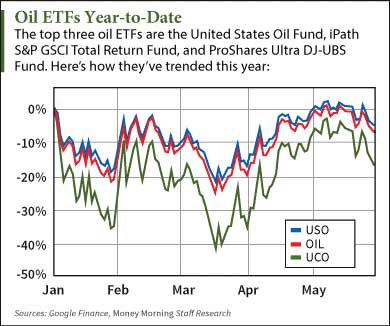 WTI oil prices are up 23.2% since they bottomed at $49.65 on March 17. They are still down 37% since June 23, 2014. The S&P 500 energy sector has plummeted 23.5% over the same period.
WTI oil prices are up 23.2% since they bottomed at $49.65 on March 17. They are still down 37% since June 23, 2014. The S&P 500 energy sector has plummeted 23.5% over the same period.
Many oil ETFs are still down more than WTI oil. The United States Oil Fund LP (NYSE Arca: USO), which saw more than $2 billion in investments last year, has fallen 48.5% since last June. The ProShares Ultra DJ-UBS Crude Oil Fund (NYSE Arca: UCO) is down 46.6% over the same period.
Investors are starting to show interest in crude oil index ETFs again as prices have been rising. The Wall Street Journal reported nearly $6 billion was poured into this type of oil ETF in the first quarter alone.
Now is a good time to bet on higher oil prices. Oil is up 7.5% this year and expected to keep climbing. But USO and UCO are not the best oil ETFs to profit from the rebound.
In fact, crude oil index ETFs have one major problem right now that many investors aren't aware of...
Why These Popular Funds Are Not the Best Oil ETFs to Buy Now
Thanks to a problem known as "contango," crude oil index ETFs miss out on profits during low oil price periods.
Contango is a situation in which futures prices are higher than the spot price of oil.
You see, many oil ETFs like USO and UCO track futures contracts instead of the spot price. When there's a gap between the price of the expiring futures contract and the new futures contract, the ETF is forced to buy contracts at the higher price. In other words, the fund is always buying high and selling low.
For instance, if a new contract is $4 higher than the expiring one, investors will encounter what is called a "negative roll yield" of $4. That's because the fund is buying high and selling low to track the oil price month to month.
Contango only happens during periods of unusually low prices and high production.
The last time this happened to the oil market was the "supercontango" of the 2008 financial crisis. Back then, oil tanker ships stockpiled millions of barrels off the coasts of major production areas like the Gulf of Mexico and England. The gap between the WTI oil spot price and futures price 12 months later was more than $23 a barrel.
These oil index funds aren't healthy investments now because any spread between the spot price and futures price can cause them to miss profits.
Instead, the best oil ETFs to invest in now focus on the midstream sector. These funds hold companies that make money from owning pipelines, storage facilities, and other infrastructure.
Here's our top pick, which has surged more than 2% over the last two weeks...
The Best Oil ETF to Invest in Today
The best oil ETF profit play is the First Trust North American Energy Infrastructure Fund (NYSE Arca: EMLP). First Trust holds 69 stocks, representing a wide range of American and Canadian energy companies.
[epom key="ddec3ef33420ef7c9964a4695c349764" redirect="" sourceid="" imported="false"]
Most of EMLP's holdings are midstream master limited partnerships (MLPs). These companies aren't as exposed to low oil prices because they derive at least 50% of their revenue from storage and transportation infrastructure. These "marketproof" holdings are like tollbooth collectors at a bridge, collecting fees as long as oil keeps flowing.
"When you invest in the midstream, you're far less susceptible to price fluctuations in the underlying commodity, and you are able to collect easy profits from the growing demand in fuels," Money Morning Global Energy Strategist Dr. Kent Moors explained.
First Trust has $1.2 billion in net assets and became the first oil ETF to hit the $1 billion asset mark. Morningstar Inc. (Nasdaq: MORN) rated it the best "equity energy" ETF last year after it saw a one-year total return of 23.8%.
Not to mention it's reaping benefits from the largest MLP merger of the year...
Energy Transfer Partners LP (NYSE: ETP), one of EMLP's largest holdings, acquired Regency Energy Partners (NYSE: RGP) on April 30. The $18 billion deal made Energy Transfer Partners the second-largest MLP on the market.
Despite being down 6% this year, EMLP has gained 2.1% since June 12. That means it's in the early stage of a strong rebound as oil prices near the $70 range by the end of 2015.
"Absent any major geopolitical tension, beyond the levels we're already seeing, oil prices should begin to level off," Moors noted. "Oil won't have to hit triple digits to hand us some fantastic new opportunities."
The 3 Best ETFs to Own for 2015
By
ETF investing is a safe, easy way to profit from a booming industry, without the risk of buying into a specific stock.
That's why we've compiled the list of the three best ETFs to own for 2015.
These ETFs give investors exposure to three of today's most profitable industries on the market:
- One ETF deals with a $575 billion global problem.
- Another is in the midst of a $166 billion M&A spree.
- The third "best ETF" plays the market's highest-performing index and invests in some of the world's most innovative companies.
Take a look at the three best ETFs to own today ...
Best ETFs to Own for 2015, No. 1: HACK
The first ETF we recommend is the PureFunds ISE Cyber Security ETF (NYSE Arca: HACK). It's an ETF that invests in cybersecurity, one of the fastest-growing industries on the market.
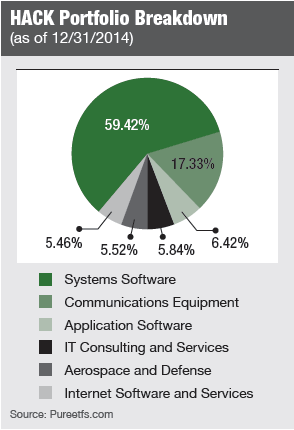 Last year, more than $95 billion was spent on cyber defense. That total is expected to hit $155.74 billion by 2019, according to research firm MarketsandMarkets. That's a 63% growth rate.
Last year, more than $95 billion was spent on cyber defense. That total is expected to hit $155.74 billion by 2019, according to research firm MarketsandMarkets. That's a 63% growth rate.
IBM Corp. (NYSE: IBM) claims its client companies are attacked 16,856 times per year on average.
Each year, cybercrime costs the global economy more than $575 billion, annually.
The biggest names in the industry have also been some of the biggest winners. FireEye Inc. (Nasdaq: FEYE), one of the most recognizable names in the industry, is up 68.6% in 2015. The Dow is up just 0.5% in the same time.
But these stocks can also be very volatile. Last July, FEYE stock fell nearly 18% in the first week of the month.
That's why we recommend the HACK ETF. It holds some of the biggest names in cybersecurity like Cyberark Software Ltd. (Nasdaq: CYBR), Qualys Inc. (Nasdaq: QLYS), and Infoblox Inc. (NYSE: BLOX). Those three stocks alone are up 81%, 19%, and 34% in 2015, respectively.
"One of the things I really like about HACK is its industry-specific diversity," Money Morning Small-Cap Investing Specialist Sid Riggs said. "HACK is most heavily invested in the systems software industry, which will prove to be a great stabilizing force for the fund. That's the sphere of the IT sector that's been growing most reliably since 2010, with the consulting firm Gartner Inc. already forecasting enterprise software to grow by 7.3% in 2015."
HACK is up 24.4% in 2015. It has more than $990 million in assets and has an expense ratio of 0.75%.
Best ETFs to Own for 2015, No. 2: FBT
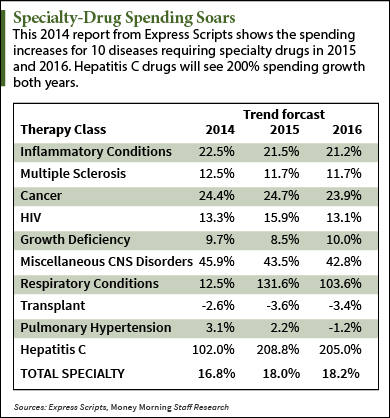 We're also targeting the pharmaceutical and biotech industries with our ETF investing strategy in 2015. Our top pick is the First Trust NYSE Arca Biotech ETF Fund (NYSE: FBT).
We're also targeting the pharmaceutical and biotech industries with our ETF investing strategy in 2015. Our top pick is the First Trust NYSE Arca Biotech ETF Fund (NYSE: FBT).
You see, drug spending has increased across the board.
According to the IMS Institute of Health, global cancer spending topped $100 billion for the first time in 2014. That was 10% higher than it had been in 2013.
Almost every specialty drug will see a hike in spending in both 2015 and 2016 as well, says Express Scripts. Hepatitis C treatments will lead the way, with growth of 208% in 2015 and 205% in 2016.
Spending on inflammatory conditions is expected to grow more than 21% each year. Multiple sclerosis spending will jump by 11% each year. Respiratory conditions will see sales growth of 131% and 103%.
There has also been a massive M&A boom in these industries. According to PricewaterhouseCoopers, the "life sciences" field had 35 M&A deals in Q1 2015. The life sciences industry is made up of pharmaceuticals, medical devices, biotech, diagnostics, and contract-research organizations.
Those deals totaled $166.3 billion. That's more money than was spent during all of 2014, which saw M&A activity total $150.1 billion. In Q1 2014, just $46.5 billion was spent.
FBT has gained 18.5% in 2015, compared to just 0.5% for the Dow Jones.
"The stocks in the First Trust fund have a median market cap of about $8.4 billion," Money Morning Defense & Tech Specialist Michael A. Robinson said when he first recommended it. "That's large enough to offer stability but small enough to deliver plenty of upside."
Regeneron Pharmaceuticals Inc. (Nasdaq: REGN), Celgene Corp. (Nasdaq: CELG), and Gilead Sciences Inc. (Nasdaq: GILD) are three of FBT's biggest holdings. Those three are up 63%, 38%, and 47% in the last 12 months.
FBT has 30 holdings that are all roughly equal in size, near 5%.
Best ETFs to Own for 2015, No. 3: ONEQ
The third in our series of best ETFs to own for 2015 is the Fidelity Nasdaq Composite Index Tracking Stock (Nasdaq: ONEQ).
The Nasdaq Composite has had an impressive run in 2015. On March 2, the Nasdaq topped the 5,000 mark for the first time in 15 years. The index closed at a record high of 5,107 on May 27.
Year to date, the Nasdaq is up 6.8%. ONEQ has climbed 7.2% in the same time.
The Nasdaq's rise this year, widely outpacing the two other key benchmarks, is also much healthier than its climb during the dot-com bubble. Companies leading the Nasdaq today have solid earnings. Plus, many pay regular dividends.
[epom key="ddec3ef33420ef7c9964a4695c349764" redirect="" sourceid="" imported="false"]
Some of ONEQ's biggest holdings include Apple Inc. (Nasdaq: AAPL), Microsoft Corp. (Nasdaq: MSFT), and Google Inc. (Nasdaq: GOOG, GOOGL). AAPL is the biggest winner of the group, up 40% in the last year.
But the ETF doesn't just invest in large-cap firms. Starbucks Corp. (Nasdaq: SBUX), biotech giant Gilead Sciences Inc. (Nasdaq: GILD), and financial services leader T. Rowe Price Group Inc. (TROW) are also holdings.
"This is a great foundational type of investment," Robinson said in September 2014. "You can use it to build around. You can use it to be the recipient of regular contributions and to achieve some of those long-term 'life goals' like house down payments, college funds, and retirement. The shrewdest investors will look at this as an investment they'll want to own for a long, long time - if not forever."
ONEQ has $573 million in assets and has climbed 17.3% in the last 12 months.
What Is a Preferred Stock ETF?
By
In the ongoing hunt for yield, many investors have turned to a preferred stock ETF (exchange-traded fund).
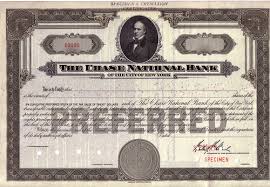 To understand these ETFs, it's necessary to understand preferred stocks.
To understand these ETFs, it's necessary to understand preferred stocks.
In short, preferred stock is a kind of hybrid between common stocks and corporate bonds. Companies issue them as an extra financing tool. Primary issuers are financial, real estate, utility, and industrial companies needing easy access to debt markets for operations.
Preferred stocks trade on the New York Stock Exchange, Nasdaq, and global markets. They're listed separately from a company's common stock and trade at a different price. Preferred stock is typically issued at $25 per share.
Unlike common stockholders, holders of preferred stocks usually don't have voting rights. And, preferred dividends are fixed. So while a common shareholder benefits from a dividend boost, preferred shareholders don't.
Still, preferred stocks have many perks:
- Holders of preferred stock have a higher claim on assets and earnings than common stock.
- Preferred shareholders typically enjoy a higher dividend payout than common shareholders.
- Preferred stocks aren't as volatile as common stocks.
A preferred stock ETF offers a diversified portfolio of preferred shares that tracks an index or a sector. Preferred stock ETFs are worth considering for investors seeking higher dividend yields, thanks to these ETFs' unique combination of bond and equity characteristics:
- Like bonds, preferred stock ETFs generally pay stable dividends with more frequent distributions than common shares.
- Like equities, preferred stock ETFs have the potential to appreciate in value, offering additional growth potential.
If you're looking for a preferred stock ETF, here are three to consider...
3 Preferred Stock ETFs to Buy
Preferred Stock ETF No. 1: The Global X SuperIncome Preferred ETF (NYSE Arca: SPFF). SPFF's goal is to mirror the investment results of the S&P Enhanced Yield North American Preferred Stock Index.
SPFF is designed to track 50 of the highest-yielding preferred securities from the United States and Canada, the two largest preferred stock markets.
With a market cap of $289.67 million, SPFF is heavy on financials. The sector's weighting is 80.29%. The remainder is spread across materials, telecom, REITs, and energy.
SPFF's last monthly dividend was paid on June 1 at a rate of $0.0825 per share. Its yield is 6.9%.
Preferred Stock ETF No. 2: The iShares S&P US Preferred Stock Index Fund (NYSE ARCA: PFF). This preferred stock ETF tracks the investment results of the S&P U.S. Preferred Stocks Index. The index measures the performance of a select group of preferred stocks listed on the NYSE and Nasdaq.
PFF has a market cap of $13.32 billion, with 302 holdings.
PFF's latest monthly distribution, paid June 1, was $0.181 a share. Its yield is 6.08%.
Preferred Stock ETF No. 3: The Market Vectors Preferred Securities ex-Financials (NYSE ARCA: PFXF). This preferred stock ETF aims to replicate the performance of the Wells Fargo Hybrid Preferred Securities ex Financials Index. The index is comprised of a basket of securities traded on U.S. exchanges that are not in the financial sector.
PFXF has a market cap of $287.61 million.
PFXF's most recent monthly distribution was paid on June 1 at a rate of $0.068 per share. Its yield is 5.59%.
Don't Buy a Crude Oil Index ETF, Buy This Energy Stock Instead
By
Many investors are looking to buy a crude oil index ETF to profit from oil's rise throughout 2015.
WTI oil prices are up 7% this year. And we expect oil prices to continue climbing in 2015.
The expected oil price climb has made crude oil index ETF investing increasingly popular. The Wall Street Journal reported about $6 billion was invested in oil ETFs in the first quarter alone.
But many crude oil index ETFs have one major problem right now that many investors aren't aware of...
Why You Shouldn't Invest in a Crude Oil Index ETF
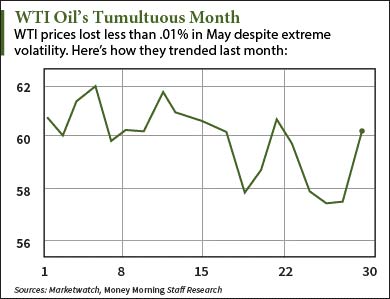 The problem is known as "contango."
The problem is known as "contango."
Contango happens when prices are higher than the spot price of oil.
You see, many of these oil ETFs track futures contracts rather than the spot price. When there's a price gap between the price of the expiring contract, and the new futures contract, the fund has to buy contracts at the higher price. That means the fund is constantly buying high and selling low.
For example, if the new futures contract is $2 higher than the expiring one, investors will encounter what is called a "negative roll yield" of $2. Again, the ETF is buying high and selling low to track the price of oil month to month.
Contango typically occurs during periods of unusually low prices and high production.
The last time this happened to oil prices was the "supercontango" during the 2008 financial crisis. Back then, oil tanker ships stockpiled millions of barrels of crude oil off the coasts of the Gulf of Mexico, England, and other major production areas. The spread between spot prices and futures prices 12 months later was more than $23 a barrel for WTI.
Any spread between the spot price and futures price can cause crude oil index ETFs to miss profits.
This chart shows an example of contango at work...
The chart tracks price movements in the WTI spot price of oil compared to the U.S. Oil Fund LP (NYSE Arca: USO).
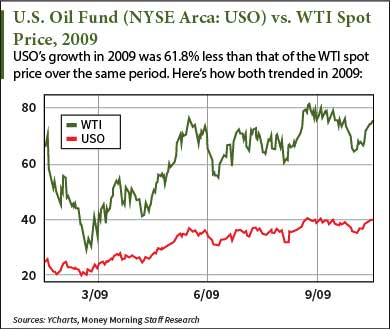 The United States Oil Fund is one of the most popular oil index ETFs on the market. Financial Times reported that more than $2 billion was invested in it in 2014.
The United States Oil Fund is one of the most popular oil index ETFs on the market. Financial Times reported that more than $2 billion was invested in it in 2014.
But USO misses out on gains when the market is in contango. From 2009 to 2011, WTI prices increased more than 115% while USO only gained 34%.
USO also endures harsher tax treatment. ETFs that track oil futures contracts face higher taxes than other funds due to their regulation by the Commodity Futures Trading Commission (CFTC). That means investors receive higher taxes as well.
While a crude oil index ETF offers some returns, there are better profit opportunities in the energy sector.
The best oil stocks to buy during contango periods are midstream master limited partnerships (MLPs). These are the firms that own assets like pipelines and storage facilities.
Money Morning Resource Specialist Peter Krauth recommends one with more than 14 terminals in strategic locations across the United States...
The Best Alternative to a Crude Oil Index ETF
A great midstream investment right now is World Point Terminals LP (NYSE: WPT).
World Point owns and operates storage facilities for crude oil, jet fuel, and liquid asphalt. Its terminals are scattered across the East Coast, Gulf Coast, and Midwestern United States.
As of early March, the MLP has 12.8 million barrels of storage capacity across its more than two dozen facilities. Its widespread locations allow the company to provide easy access to transportation near demand markets and export hubs.
"I wouldn't be surprised to see shares gain 40% to 50% over the next six months as the market comes to realize that production cuts will soon kick in and demand isn't about to fall off a cliff," Krauth explained. "In fact, I expect demand to get somewhat more robust as retail, commercial, and industrial consumers find ways to use more at these lower prices."
Yahoo! Finance has a one-year target estimate of $20.75. That's 22.1% higher than WPT stock's current price of $17 a share.
The Best Biotech ETF to Buy in 2015
By
Our favorite biotech ETF has been one of the biggest winners of this sector's 2015 rally...
In the last year, the Nasdaq Biotechnology Index has soared 48.3%. The Dow and S&P 500 are up just 7.3% and 8.6% in that time.
But the biotech ETF that we've recommended to Money Morning readers has done even better. In the last 12 months, it has climbed 54.2%. That's more than seven times the returns of the Dow Jones.
Before we examine the biotech ETF pick, let's take a look at what's pushing biotech higher in 2015...
Why We Like This Biotech ETF for 2015
We've seen numerous "Buy" signals for biotech stocks in 2015.
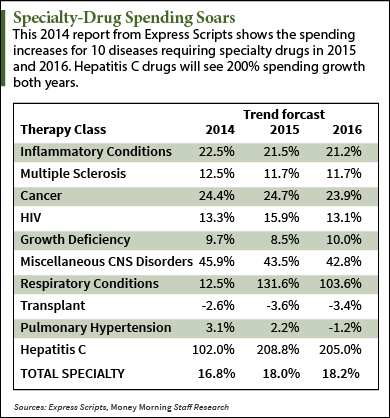 First was a report from the IMS Institute of Health that claimed global cancer spending topped $100 billion for the first time in 2014. That was 10% higher than it had been in 2013.
First was a report from the IMS Institute of Health that claimed global cancer spending topped $100 billion for the first time in 2014. That was 10% higher than it had been in 2013.
"The increased prevalence of most cancers, earlier treatment initiation, new medicines, and improved outcomes are all contributing to the greater demand for oncology therapeutics around the world," IMS's Senior Vice President Murray Aitken said in a statement in May.
That increased spending has pushed cancer-focused biotech companies higher in 2014 and 2015.
And it's not just cancer drugs that have seen increased spending...
According to Express Scripts, almost every specialty drug will see a hike in spending in both 2015 and 2016. Hepatitis C treatments will lead the way, with growth of 208% in 2015 and 205% in 2016.
Spending on inflammatory conditions is expected to grow more than 21% each year. Multiple sclerosis spending will jump by 11% each year. Respiratory conditions will see sales growth of 131% and 103%.
Finally, an M&A boom in the pharmaceutical sector has helped lift biotech stocks and biotech ETFs in 2015.
According to PricewaterhouseCoopers, the "life sciences" field had 35 M&A deals in Q1 2015. The life sciences industry is made up of pharmaceuticals, medical devices, biotech, diagnostics, and contract-research organizations.
Those deals totaled $166.3 billion. That's more money than was spent during all of 2014, which saw M&A activity total $150.1 billion. In Q1 2014, just $46.5 billion was spent.
Top pharma companies go on the hunt for smaller firms when their older patents are about to expire. Instead of developing their own drugs - which can take up to 10 years and $1 billion - they buy other companies with new drugs.
This can send the share prices of both the acquired and the acquiring companies soaring.
That's why we've been recommending a biotech ETF this year. It allows investors to profit from the entire industry, not just one company. Here's the pick...
The Top Biotech ETF to Buy Now
The biotech ETF we like is the First Trust NYSE Arca Biotech ETF Fund (NYSE: FBT).
FBT has 30 holdings that are all roughly equal in size, near 5%. The biggest holding, Seattle Genetics Inc. (Nasdaq: SGEN), comprises just 4.2% of FDT's assets. SGEN stock is up almost 46% in 2015 alone.
"The stocks in the First Trust fund have a median market cap of about $8.4 billion," Money Morning's Defense and Tech Specialist Michael A. Robinson said when he first recommended it. "That's large enough to offer stability but small enough to deliver plenty of upside."
FBT offers a way to play some of the most exciting biotech stocks on the market, including the following:
- Regeneron Pharmaceuticals Inc.'s (Nasdaq: REGN) main product combats blindness in senior citizens. The company has a $52 billion market cap, 30% operating margins, and return on equity (ROE) of 13.7%. FBT has 3.8% of its holdings in REGN.
- Celgene Corp. (Nasdaq: CELG) has several cancer drugs on the market right now and a market cap of $89 billion. CELG has operating margins of 40% and an ROE of 43.4%, and it makes up 3.2% of FBT's holdings.
- Gilead Sciences Inc. (Nasdaq: GILD) accounts for 3.8% of FDT's assets. GILD is best known for its hepatitis C treatments. It has a market cap of $174 billion, 65.4% operating margins, and ROE of 90.4%.
More than 94% of FBT's holdings are U.S. companies. Of those, nearly 70% are medium, large, or giant-cap firms. Risk is also limited - with micro-caps comprising just 3%.
FBT has brought shareholders consistent gains throughout the year. Over the last month, it's up 3.9%. Year to date, it's gained 20.5%. Over the last 12 months, investors have seen a 54.3% profit. FBT currently trades near $123 per share.
The Best Nasdaq ETF to Buy Today
By
It's a good idea for investors to have a solid Nasdaq ETF (exchange-traded fund) as a core holding. For one reason, the Nasdaq Composite Index is having quite a year.
The Nasdaq topped the 5,000 mark on March 2 for the first time in 15 years. On May 27, the Nasdaq closed at a record high of 5,107. That marked the highest finish since the exchange peaked at 5,132.52 intraday on March 2000.
Year to date, the Nasdaq is up 6.65% - as is our favorite Nasdaq ETF. And over the past six months, the Nasdaq is up 7.39%, while the Dow Jones Industrial Average has gained just 1.49%, as this chart shows:
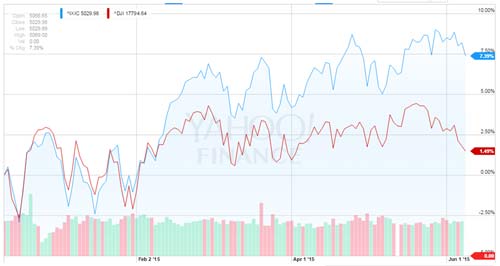 The Nasdaq's rise this year, widely outpacing the two other key benchmarks, is also much healthier than its climb during the dot-com bubble. Companies leading the Nasdaq today have solid earnings. Plus, many pay regular dividends.
The Nasdaq's rise this year, widely outpacing the two other key benchmarks, is also much healthier than its climb during the dot-com bubble. Companies leading the Nasdaq today have solid earnings. Plus, many pay regular dividends.
These industry leaders affect the Nasdaq's performance the most because it is a market-weighted index. These are also key holdings in one of the best Nasdaq ETFs to invest in today...
A Closer Look at the Best Nasdaq ETF to Invest in Now
Apple Inc. (Nasdaq: AAPL), which has led the Nasdaq for some four years, is the biggest company within the Nasdaq, with a market cap of $742 billion. Its weighting on the Nasdaq is roughly 10%, according to the Wall Street Journal. Shares of the iPhone maker are up 16.91% year to date and have more upside. We see AAPL becoming the first trillion-dollar company, which puts shares at $170 apiece. AAPL currently trades at $127.
Microsoft Corp. (Nasdaq: MSFT) is a distant No. 2 with a $373.1 billion market cap. Internet search goliath Google Inc. (Nasdaq: GOOG, GOOGL) is third with a market cap of $368 billion. Next are Facebook Inc. (Nasdaq: FB) and e-commerce goliath Amazon.com Inc. (Nasdaq: AMZN) at $228.59 billion and $197 billion, respectively.
Large-cap tech companies aren't the only Nasdaq drivers.
Also fueling the index are coffee king Starbucks Corp. (Nasdaq: SBUX), biotech giant Gilead Sciences Inc. (Nasdaq: GILD), and financial services leader T. Rowe Price Group Inc. (TROW).
That's why this Nasdaq ETF is one of the best long-term investments to make now. It isn't just exposed to tech firms, but to all the Nasdaq's strong players.
Money Morning Executive Editor Bill Patalon and Defense & Tech Specialist Michael A. Robinson call this Nasdaq ETF "the one investment you should never sell."
This Nasdaq ETF Is the Holy Grail of Tech Investing
The Nasdaq ETF to buy today is the Fidelity Nasdaq Composite Index Tracking Stock (Nasdaq: ONEQ).
ONEQ tracks and aims to replicate the Nasdaq Composite Index. ONEQ's top 10 holdings are leaders in mobile, Internet, cloud computing, biotech, and e-commerce. In other words, the most lucrative sectors right now.
"This is a great foundational type of investment," Robinson said in September 2014. "You can use it to build around. You can use it to be the recipient of regular contributions and to achieve some of those long-term 'life goals' like house down payments, college funds, and retirement. The shrewdest investors will look at this as an investment they'll want to own for a long, long time - if not forever."
ONEQ also boasts Morningstar's highest 5-star rating.
The best way to capitalize on an investment like ONEQ, Patalon explains, is by using an investment strategy called dollar-cost averaging. The technique involves buying a fixed dollar amount of shares on a regular schedule, regardless of the price. When prices are low, more shares are bought. When prices are high, fewer shares are added to a position.
For a detailed breakdown on using dollar-cost averaging to invest in this Nasdaq ETF, continue here.
3 of the Best ETFs for 2015
By
Since the first exchange-traded fund (ETF) debuted in January 1993 (the SPDR S&P 500 ETF Trust [NYSE Arca: SPY] or "spider" for short), ETFs have experienced a tremendous growth spurt and increased popularity. Today, there are more than 1,600 ETFs.
Now there's an ETF for nearly every sector and investment strategy.
So what are the best ETFs for 2015? These three are tapped into key sectors on the rise this year...
Best ETFs for 2015, No. 1: The Cybersecurity Boom ETF
The president has made cybersecurity one of his top priorities of 2015.
"Cyberthreats pose one of the most serious economic and national security challenges to the United States," U.S. President Barack Obama said in a statement.
Every year, cybercrime costs the global economy more than $575 billion. That's more than 3% of America's 2014 GDP. And it reflects the huge demand from countries, companies, and individuals determined to protect themselves.
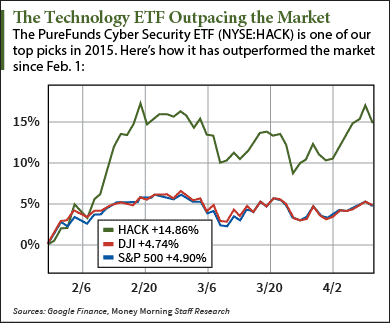 By 2019, cybersecurity spending will reach $155.74 billion, according to market research firm MarketsandMarkets. That's a 63% growth rate.
By 2019, cybersecurity spending will reach $155.74 billion, according to market research firm MarketsandMarkets. That's a 63% growth rate.
That's why one of the best ETFs for 2015 is the PureFunds ISE Cyber Security ETF (NYSE Arca: HACK). HACK offers investors a more stable play on the entire industry, instead of picking specialized companies that may have volatile stocks.
Money Morning Small-Cap Investing Specialist Sid Riggs first recommended this ETF to his readers in February. Since then, HACK has climbed 15.42%.
"One of the things I really like about HACK is its industry-specific diversity," Riggs said. "HACK is most heavily invested in the systems software industry, which will prove to be a great stabilizing force for the fund. That's the sphere of the IT sector that's been growing most reliably since 2010, with the consulting firm Gartner Inc. already forecasting enterprise software to grow by 7.3% in 2015."
This tech ETF has more than $500 million in assets and has an expense ratio of 0.75%. An average of 359,000 HACK shares are exchanged on a daily basis.
Hack opened today at $30.74 and has a range of $24.44 to $30.74 since its November debut.
Best ETFs for 2015, No. 2: The Legacy Tech ETF
Fidelity Nasdaq Composite Index Tracking Stock (Nasdaq: ONEQ) is an ETF that mirrors the tech-focused Nasdaq Composite Index. This is a fund that you should be looking to own for many years.
Money Morning Defense and Tech Specialist Michael Robinson considers it to be a foundational ETF. "The shrewdest investors will look at this as an investment they'll want to own for a long, long time - if not forever."
ONEQ is dominated by big-cap tech. Its top 10 holdings are a "Who's Who" of tech leaders in mobile, the Web, cloud computing, biotech and e-commerce: Apple Inc. (Nasdaq: AAPL), Microsoft Corp. (Nasdaq: MSFT), and chip giant Intel Corp. (Nasdaq: INTC). It also includes biotech leader Gilead Sciences Inc. (Nasdaq: GILD), e-commerce king Amazon.com Inc. (Nasdaq: AMZN), and social networking icon Facebook Inc. (Nasdaq: FB).
Though ONEQ - by definition - is focused on technology, the fund also provides some nice diversification. The ETF holds about 1,940 stocks, 46% of which are tech related. Consumer cyclicals, financial services, and industrials make up another 25% of ONEQ's holdings.
ONEQ opened today at $199.91 and is up 7.63% year to date.
This final best ETF for 2015 lets investors capitalize on this year's lucrative M&A activity...
Best ETFs for 2015, No. 3: The Pharma M&A ETF
For Q1 2015, healthcare M&A totaled $104.9 billion, according to Health Care M&A News. Money Morning's Robinson recommends this next fund as a way to profit from the ongoing surge in healthcare M&A activity.
The SPDR S&P Pharmaceuticals ETF (NYSE: XPH) is composed of big pharmaceutical companies and several aggressive small caps.
"XPH is not an M&A fund - but it's a great way to take advantage of the trend," Robinson said. "Many companies in the fund's portfolio will likely end up growing through mergers. Or they could become targets themselves."
The ETF has 39 holdings, and the average market cap is $37 billion.
Other major holdings include Actavis Plc. (NYSE:ACT), Jazz Pharmaceuticals Plc. (Nasdaq: JAZZ), Eli Lilly and Co. (NYSE: LLY), and Merck & Co. Inc. (NYSE: MRK).
"XPH is more than just a great way to cash in on the steady stream of biotechnology and pharmaceutical M&A activity," Robinson continued. "This is an ETF that, at its heart, is focused on biopharma firms' ongoing high earnings growth."
Since the start of 2014, XPH has gained 47.84%. That compares to just 9.72% for the Dow Jones and 15% for the S&P 500.
Best ETFs to Buy to Profit from the Booming M&A Market
By
Some of the best ETFs to buy in 2015 help investors get a piece of a very lucrative trend: mergers and acquisitions.
 The collective total of global M&A announced year to date eclipsed a whopping $1 trillion through the first week of April, according to Dealogic.
The collective total of global M&A announced year to date eclipsed a whopping $1 trillion through the first week of April, according to Dealogic.
At the current pace, M&A activity is on track to exceed $3.7 trillion in 2015. That would make this year the second biggest for deal-making since 2007. A total $4.3 trillion in deals was inked that year.
Deals announced so far this year are both numerous and hefty in size. Fifteen of this year's deals carry a price tag of more than $10 billion. That's the highest on record, Dealogic reports.
Last Wednesday brought two deals worth some $100 billion. Royal Dutch Shell Plc. (NYSE ADR: RGS.A) announced it will buy BG Group Plc. (LON: BG) for $70 billion. And Mylan NV (Nasdaq: MYL) courted Perrigo Co. Plc. (Nasdaq: PGRO) with a $29 billion proposal.
These latest deals further stoked hopes that more transactions are on the horizon.
It's never wise to buy a stock purely based on takeover speculation. But dedicating a small allocation to this strategy affords a way to play merger mania with less risk. And ETFs offer a great way to do so.
Following are two of the best ETFs to buy to get exposure to the lucrative M&A market. Both ETFs have bested the year-to-date gains for the Dow Jones Industrial Average (1.6%) and S&P 500 (2.24%) - one by a wide margin.
Best ETFs to Buy to Profit from M&A Activity
Best ETFs to Buy, No. 1: The IQ Merger Arbitrage ETF (NYSE Arca: MNA) covers takeover targets worldwide.
The fund's goal is to achieve capital appreciation by investing in global companies for which there has been a public announcement of a takeover by an acquirer. The approach is based on a passive strategy of owning certain announced takeover targets. The aim is to generate returns representative of global merger arbitrage activity.
MNA also includes short exposure to global equities as a partial equity market hedge.
The fund's one-, three-, and five-year returns are 6.79%, 11.99%, and 10.71% respectively. Its year-to-date return is 3.73%.
This next ETF is crushing the broader market in 2015...
Best ETF to Buy No. 2: The SPDR S&P Pharmaceuticals (NYSE Arca: XPH) ETF is composed of some of the top pharmaceutical companies on the market and several aggressive small caps.
Money Morning Tech Specialist Michael A. Robinson recommends the fund as a way to profit from the ongoing surge in healthcare M&A activity. For Q1 2015, healthcare M&A totaled $104.9 billion, according to Health Care M&A News.
"XPH is not an M&A fund - but it's a great way to take advantage of the trend," Robinson said. "Many companies in the fund's portfolio will likely end up growing through mergers. Or they could become targets themselves."
The ETF has 36 holdings, including Actavis Plc. (NYSE: ACT), Jazz Pharmaceuticals Plc. (Nasdaq: JAZZ), Eli Lilly & Co. (NYSE: LLY), and Merck & Co. Inc. (NYSE: MRK). The average market cap is $36 billion.
XPH is up 19.47% year to date. Since the start of 2014, the fund has gained 47.5%. That compares to just 8.3% for the Dow Jones and 13% for the S&P 500 during the same time period.
"The beauty of a play like this one is that rather than try to pick a single winner, we get the benefit of the entire sector's operations," Robinson said. "That makes XPH an excellent foundational investment to pave your road to wealth."
Buy This Commodity ETF Before Prices Rise
By
Commodities have been in a downtrend since 2011. All commodities are priced in U.S. dollars, and a strong dollar has acted as a headwind.
But when a sector is out of favor, that's often the best time to get in on it. And a commodity ETF is a great option here.
Signs right now point to a possible bottom and reversal in commodities. Here's a look at where commodities prices are headed, plus a commodity ETF to buy to profit from the sector's rebound...
CRB Index Points to Rising Commodities Prices
One of the most widely followed commodities indexes is the Thomson Reuters/Jefferies Commodity Research Bureau (CRB) Index. Let's look at the index's performance in recent years.
As the chart below shows, CRB has fallen roughly 34% in the last four years.
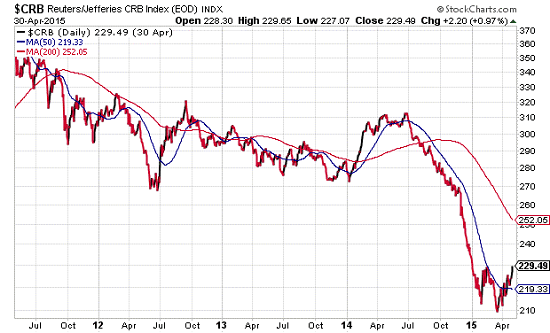 What looks like a capitulation sell-off began in December 2014 and continued into late January. Then the CRB Index hit a double bottom in mid-March.
What looks like a capitulation sell-off began in December 2014 and continued into late January. Then the CRB Index hit a double bottom in mid-March.
But today, the outlook is much different. As the U.S. dollar has weakened, the CRB has staged a rally.
To get in on that rally, here's a commodity ETF to buy...
A Unique Commodity ETF to Play the Sector's Rebound
For a low-risk way to play the broad commodities sector, consider the U.S. Commodity Index Fund (NYSE Arca: USCI). This commodity ETF offers an alternative to the Jefferies CRB Global Commodity ETF (NYSE Arca: CRBQ), which tracks the index bearing the same name.
USCI tracks the SummerHaven Dynamic Commodity Index, which looks for "opportunities" in commodity prices. Here's what that means...
The index buys the seven commodities that exhibit the greatest "backwardation." In other words, it buys futures contracts that sell for less than the current month's contract. Then it buys the next seven commodities with the strongest 12-month price change.
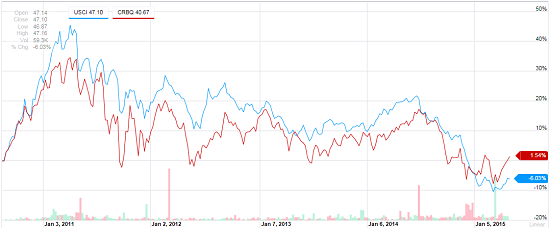
From mid-2010 until the start of 2015, USCI consistently outperformed the CRB. Then the CRB was the better option as USCI went sideways until just recently.
But thanks to the way USCI is structured, it should soon return to its position as leader and outperform a regular commodity benchmark like the CRB.

As the graph above shows, USCI has been in a climbing pattern since mid-March, when it bottomed at $44.71. In late April it easily took out the 50-day moving average.
Today (Thursday) USCI is trading at $47.34. Look for USCI to surpass the $47.50 level soon.
After that, the next target is $50. Following that, I expect it to rise all the way up to the $54 level later this year.
To reduce risk and maximize profit with the USCI commodity ETF, I suggest a hard stop at the recent low of $44.71 on a closing basis and a further trailing stop of 15%.
This Small-Cap ETF Will Capture the Growth in China's Middle Class
By
There's a fundamental shift happening in China's economy. It's giving investors an incredible opportunity to profit with this small-cap ETF...
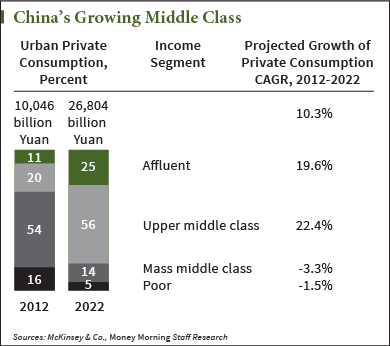 In the last decade, China's economic growth came from capital spending. This benefitted the large state-owned enterprises (SOES). But the Chinese economy is changing focus.
In the last decade, China's economic growth came from capital spending. This benefitted the large state-owned enterprises (SOES). But the Chinese economy is changing focus.
It's moving toward a consumption-driven model. It's trying to become free market-friendly. And the traditional large-cap investments are no longer providing the most compelling growth story.
This is not to say these SOES should be avoided. The largest and most liquid China ETF is the iShares China Large-Cap ETF (NYSE Arca: FXI). And for investors looking to dip their toes into emerging markets, it's perhaps the safest way to play China.
The allure of these companies is the patronage it receives from the Chinese government.
"These mega-cap state-run companies have benefited from political and financial support from the government, their significant economies of scale, favorable regulations, and oligopolistic positions in their respective industries," wrote Morningstar analyst Patricia Oey.
But a move from the capital spending model is going to challenge the oligopolistic position of these large, Chinese government beneficiaries. Investors looking to make the most of China will want to look toward the growing middle class.
"This is a numbers game," said Money Morning Chief Investment Strategist Keith Fitz-Gerald. "With 1.3 billion consumers who want to live like we in the U.S. do, the path is clear to higher profits."
There are 600 million people in China's middle class. And that figure is expected to grow by 25 million a year, according to Ernst & Young. According to McKinsey & Co., China's middle class - wage earners making between $9,000 and $34,000 a year - has grown from 4% in 2000 to 68% in 2012. McKinsey projects that will grow to 75% by 2022.
This outgrowth of Chinese spenders is going to turn the traditional model on its head.
No longer will it be the large enterprises carrying the torch in the so-called "Chinese economic miracle."
Instead, it will be the wage earners seeking a higher standard of living. And the best Chinese stocks to buy will be the companies tapping this growth market.
That's where this small-cap ETF comes in...
A Chinese Small-Cap ETF Play on the Country's Middle Class
The Guggenheim China Small Cap ETF (NYSE Arca: HAO) has two distinct advantages over the traditional Chinese investment vehicles like FXI. This exchange-traded fund seeks to replicate the performance of the AlphaShares China Small Cap Index.
The Chinese consumer is going to move a lot of money across HAO's 303 small-cap holdings, as they seek higher standards of living.
"We're talking about a $3 trillion domestic Chinese market and growing by 7% or more a year," Fitz-Gerald said.
Its largest sector holdings are in industrials at 21.2%. Other sector holdings include technology (14.8%), consumer cyclicals (13.1%), basic materials (13%), and real estate (12.2%), according to Morningstar.
Its second advantage is that, simply put, it won't be at the mercy of government patronage like the SOES.
"Small-caps are tied almost directly to consumers," Fitz-Gerald said. "They will closely track the rise of the middle class with the least amount of interference."
Now, small-cap investing doesn't come without concerns of volatility. Price swings are more dramatic in smaller companies when money floods into these thinly traded markets. This will provide outsized gains on the upside, but there's also potential for a violent freefall on the downside when sell-offs do happen.
This may tempt investors to stick with the safer, steadier large-cap China ETFs. But that would unnecessarily lock you out from the real profit potential that's starting to emerge.
HAO is diversified enough that no one holding makes up more than 1.3% of the portfolio. This should allay some volatility. But even so, there's more to support explosiveness on the upside than downside for HAO.
Fitz-Gerald said he believes Chinese small-cap stocks are trading 30% below fair value.
And HAO has a relatively low price-to-earnings ratio of 10. This compares to the S&P average of 19.1. The average price to book and price to sales ratios are 0.91 and 0.7. If HAO is going to move dramatically at all, it's going to be up.
"By Western metrics, it's a very cheap investment right now," Fitz-Gerald said. "You'll be getting good value for your money too. I always like that."
The Bottom Line: Investors need to try to sound out their misgivings in the Red Dragon and at least allocate some capital to it.
"If you're refusing to invest in China out of principle or ignorance, you're unnecessarily restricting your profit potential," Fitz-Gerald said.
FXI is a good play for the risk-averse China investor. But if you want to profit from the real growth story- China's middle class - you'll want to place your bets small-cap ETF like HAO.
The Best Technology ETF to Profit from a Global $575 Billion Problem
By
We alerted readers to one of tech's newest and best profit opportunities in early February. And seemingly every week, we see another screaming "buy" signal for this top investment.
 The investment is a technology ETF that focuses on one of the most important and fast-growing industries today: cybersecurity.
The investment is a technology ETF that focuses on one of the most important and fast-growing industries today: cybersecurity.
This week's buy signal came when the White House acknowledged that Russian hackers penetrated parts of the White House's computer system in recent months. During the breach, hackers accessed sensitive information, including non-public details about President Obama's schedule.
The attack underscores the prevalence and magnitude of cybercrime in our society. And it's only the most recent example...
2015's Numerous Cybersecurity Buy Signals
Last week, President Obama authorized financial sanctions against malicious international hackers and any companies that knowingly benefit from cybercrime. State-operated companies in Russia and China could be affected by the sanctions.
No specific penalties were announced. The president said any hacking that harms national security or the economic health of the United States will be subject to sanctions.
"Cyberthreats pose one of the most serious economic and national security challenges to the United States," President Obama said in a statement.
The president has made cybersecurity one of his top priorities of 2015.
In February, President Obama held the first-ever White House Summit on Cybersecurity and Consumer Protection. It was a forum that gathered leaders from Congress, law enforcement, and the tech industry to discuss the nation's approach to cyber defense.
"In recent breaches, more than 100 million Americans had their personal data compromised, including, in some cases, credit card information," the president said at the time.
Before that, President Obama requested $14 billion in his 2016 fiscal-year budget for increased cyber defense. Roughly $5.5 billion of that is requested just for the Pentagon.
The White House's commitment to cyber defense means billions of dollars will start to pour into cybersecurity companies - which is huge news for investors.
"The money spent on cyber defense represents one of the highest profit potentials of anything I've encountered," Money Morning's Small-Cap Investing Specialist Sid Riggs said. "And the growth numbers spotlight not just one company but an entire sector that will have the wind at its back for the rest of our investing lifetimes."
 Some of the statistics coming from the cybersecurity industry are astounding...
Some of the statistics coming from the cybersecurity industry are astounding...
IBM Corp. (NYSE: IBM) claims its client companies are attacked 16,856 times per year on average.
"More than $95 billion will get spent this year alone trying to prevent the inevitable assault on your private information and confidential records," Riggs said. According to market research firm MarketsandMarkets, by 2019 cybersecurity spending will reach $155.74 billion. That's a 63% growth rate.
Every year, cybercrime costs the global economy more than $575 billion.
"That's more than 3% of America's 2014 GDP, and it's creating a lot of pent-up demand from countries, companies, and individuals determined to protect themselves," Riggs explained.
But for investors, picking individual cybersecurity stocks is difficult. Each company is highly specialized, focusing on just a small part of the market. Many of them are also very volatile.
That's why we recommend taking a balanced approach with this technology ETF...
The Best Technology ETF to Play Cybersecurity's Rise
Riggs first recommend the PureFunds ISE Cyber Security ETF (NYSE Arca: HACK) to investors in early February.
Since then, the technology ETF has gained 14.9%. That compares to gains of just 4.3% for both the Dow Jones Industrial Average and the S&P 500.
HACK gives investors a piece of 31 sector leaders at once. Many of the fund's holdings are software companies.
"One of the things I really like about HACK is its industry-specific diversity," Riggs said. "HACK is most heavily invested in the systems software industry, which will prove to be a great stabilizing force for the fund. That's the sphere of the IT sector that's been growing most reliably since 2010, with the consulting firm Gartner Inc. already forecasting enterprise software to grow by 7.3% in 2015."
Roughly 75% of its holdings are U.S. companies. They include major stocks like:
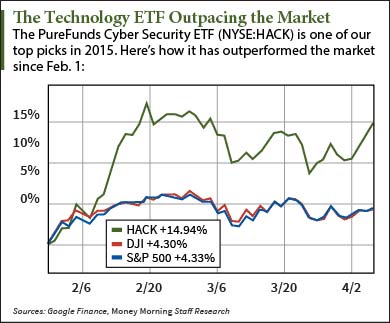 Cyberark Software Ltd. (Nasdaq: CYBR), an Israeli cybersecurity company that sells protective software to companies around the world, including 30 Fortune 100 companies. Its stock is up 99.6% in the last year.
Cyberark Software Ltd. (Nasdaq: CYBR), an Israeli cybersecurity company that sells protective software to companies around the world, including 30 Fortune 100 companies. Its stock is up 99.6% in the last year.- FireEye Inc. (Nasdaq: FEYE), which provides malware protection and automated threat forensics in case of an attack. FEYE stock is up 31% in 2015.
- Qualys Inc. (Nasdaq: QLYS), which offers cloud-based and web-application based security offerings to its nearly 7,000 customers. In the last year, QLYS stock is up 122%.
This tech ETF has more than $500 million in assets and has an expense ratio of 0.75%. An average of 359,000 HACK shares are exchanged on a daily basis.
"The average weighting of each of the companies in HACK is just over 3%, which means the fund shouldn't get dragged down by the stumbles of any one investment," Riggs continued.
HACK opened today at $28.85. The technology ETF has a 52-week range of $24.44 to $29.61.
What Is a Leveraged ETF?
By
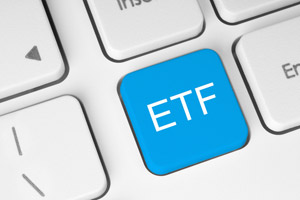 A leveraged ETF (exchanged-traded fund) is like most ETFs in that it trades like a stock and is designed to track the performance of a particular index. However, a leveraged ETF is distinctly different in two ways.
A leveraged ETF (exchanged-traded fund) is like most ETFs in that it trades like a stock and is designed to track the performance of a particular index. However, a leveraged ETF is distinctly different in two ways.
A leveraged ETF uses financial derivatives and debt to increase returns. It also doesn't track the returns of an index on an annual basis, but the daily changes.
Here's a closer look.
How a Leveraged ETF Operates
Magnified Exposure to an Index: Classic ETFs track an index or a basket in a one-for-one manner and are basically passively managed. Leveraged ETFs, meanwhile, attempt to track an index or basket in a two-for-one or three-for-one manner. They require active management.
In short, leveraged ETFs exaggerate the impact of markets' movements. As such, their price will be much more volatile (two or three times) than the underlying index.
In a leveraged ETF with a 2:1 ratio, for example, each dollar of investor capital is matched with an additional dollar. On any given day the underlying index returns 1%, the fund will ideally return 2%. That 2% return will be slightly less for leveraged ETF investors due to management fees and transactions costs.
That kind of return is great when an index is rising. But leveraged ETFs work both ways. When an index falls, a loss in a leveraged ETF will be magnified. A 1% drop in an index translates into a 2% drop in a leveraged ETFs.
Focused on Daily Performance: Most leveraged ETFs are designed to hit their goal every day. That means their performance over long periods of time ends up differing from the underlying index.
The following example from the Securities and Exchange Commission's (SEC) website is a prime illustration:
Let's say that on Day 1, an index starts with a value of 100 and a leveraged ETF that seeks to double the return of the index starts at $100. If the index drops by 10 points on Day 1, it has a 10% loss and a resulting value of 90. Assuming it achieved its stated objective, the leveraged ETF would therefore drop 20% on that day and have an ending value of $80. On Day 2, if the index rises 1%, the index value increases to 99. For the ETF, its value for Day 2 would rise by 2%, which means the ETF would have a value of $96. On both days, the leveraged ETF did exactly what it was supposed to do - it produced daily returns that were two times the daily index returns. But let's look at the results over the 2-day period: the index lost 1% (it fell from 100 to 99) while the 2x leveraged ETF lost 4% (it fell from $100 to $96). That means that over the two-day period, the ETF's negative returns were 4 times as much as the two-day return of the index instead of 2 times the return.
Without question, leveraged ETFs are not for everyone. In fact, they come with sharp warning labels.
Who Uses Leveraged ETFs
Institutional investors, with short-term goals hugely different than the average retail investor, use leveraged ETFs. Day traders looking for big gains in a single session also use them. Simply put, leveraged ETFs provide these investors (or more aptly traders) with more leverage.
Investors with a long-term horizon, and those with low risk tolerance, are not well suited for a leveraged ETF. Issuers of these funds make that very clear in their marketing material.
One leveraged ETF, ProShares UltraShort S&P 500 ETF (NYSE Arca: SDS) has a full page on its website highlighting the fund's risks. Performance may be more pronounced than an underlying index's, the site cautions. It adds that investors should monitor their "holdings consistent with their strategies, as frequently as daily."
The SEC issued a warning about leveraged ETFs in 2012.
In an educational ETF bulletin, the government agency's Office of Investor Education and Advocacy said leverage ETFS were potentially unsuitable for long-term investors. Cited was the fact that leveraged ETFs achieve their investment objectives on a daily basis only.
The bulletin also stated that while some ETFs are relatively easy to understand, others could have unusual investment objectives. Some could use complex investment strategies that might be difficult to understand.
"Do not invest in something that you do not understand," the SEC said. "If you cannot explain the investment opportunity in a few words and in an understandable way, you may need to reconsider the potential investment."
That says it best.
Biotech ETF Performance Shows Rally Is Not A Fluke
By
Popular biotech ETF First Trust NYSE Arca Biotechnology Index Fund (NYSE Arca: FBT) is up 23.5% on the year. It's among our top performing picks for year-to-date performance from our "stocks to invest in" list.
The rally in this particular biotech ETF is an important signal for the sector. It shows there's stability in biotech's 2015 rise.
You see, many of the sector's biggest gainers often come from smaller companies.
Small biotechs are volatile and tied heavily to federal regulatory activity. It's one step after another for a small pre-clinical firm to get the Feds on board with a drug they're trying to market. A step ahead in the regulatory process can help boost stock prices dramatically overnight.
"There are a lot of regulatory catalysts that can drive the price up very suddenly because people get giddy about the profits they can make," Money Morning Biotech Investing Specialist Ernie Tremblay said. "If for example, you have a Phase III data release on a particular drug that's going to treat various diseases that can't be treated currently, you'll generally see a rapid rise in share price."
Just look at a company like Puma Biotechnology Inc. (NYSE: PBYI). On July 23, 2014, Puma announced positive results of its Phase III clinical trial, the last phase before a drug or treatment can be made marketable, for a breast cancer drug. In one day, the stock shot up from $59.03 to $233.43 - a 295.4% gain in a single day.
But a step back produces the opposite effect. Any apparent Food and Drug Administration disapproval can devastate share prices.
So it's easy to see why a handful of smaller biotechs breaking out would not be a ringing endorsement for the sector as a whole. After all, their share prices are tied to the fickle ebb-and-flow of a regulatory process that is all but certain. Any surge can be undone.
And the spate of small surging biotechs, of which our top 10 stocks to invest in features a few, could just be the work of intrepid investors looking to pump up a smaller, more sensitive subsector.
But instead of a slew of hypersensitive stocks subject to one-time upward price gains carrying the sector, it's a wide-range of firms.
2015 Biotech ETF Surge Reflects Healthy Sector
The FBT is a broad exchange-traded fund of 31 companies. While its holdings do include smaller companies like the red-hot Novavax Inc. (Nasdaq: NVAX), up 63.7% on the year, it also tracks biotech as a whole.
Its holding feature big names like Regeneron Pharmaceuticals Inc. (Nasdaq: REGN), Biogen Idec (Nasdaq: BIIB), Celgene Corp. (Nasdaq: CELG), and Gilead Sciences Inc. (Nasdaq: GILD).
Larger firms are more established. They aren't as subject to the violent upward price swings. They can rely on revenue from sales of their existing drugs, as opposed to crashing in on the biotech scene with a revolutionary treatment after years of R&D.
And thus far this year, it looks like they've added a reliable boost to the biotech ETF rally in 2015.
Across the board biotech is having a great 2015. This is following a year where the iShares Nasdaq Biotechnology ETF (Nasdaq: IBB) had already soared 33.8%.
This year the rally spans across all different subsectors and firm sizes.
You have Novavax, a smaller vaccine maker, up 63.7%. Then there's Lannett Co. Inc. (NYSE: LCI), a generic drug vendor up 60.7%. And then there are the big names like Biogen. Biogen saw its stock surge as much as 8% today (Friday) on positive developments for an Alzheimer's drug.
Investors see the value of companies that provide solutions for the most pressing global health issues.
And the gains in the sector run the gamut. It's not just a collection of smaller firms getting a boost from various regulatory catalysts. It's firms of all shapes and sizes appealing to the investing public for what the sector brings to the market.
The Only ETF List You Need to Make Money
By
Each week our experts deliver the latest profit plays to our Money Morning members. Today you're getting a stock market delicacy: an ETF list comprised of the most promising, profitable exchange-traded funds that our experts like for 2015.
From biotech to cryptocurrency to healthcare M&As, ETFs are among the best low-cost ways to profit from this year's top trends. They give you access to an industry's best performers through just one investment. And because they have multiple holdings, they limit risk.
Let's get to it. This ETF list gives you seven of the best investments to make today.
Let This ETF List Be Your Guide to 2015's Biggest Profits
 Our 2015 ETF List, Pick No. 1: Our Defense and Tech Specialist Michael Robinson knows that when Wall Street says something is dead, that "thing" is most certainly alive and kicking. The latest Street-declared "death" is that of the healthcare industry. But such a statement couldn't be further from the truth. In fact, since the beginning of 2014, the S&P Health Care Index has surged 29%. And don't forget about AbbVie Inc.'s (NYSE: ABB) recent acquisition of Pharmacyclics for a cool $21 billion on Wednesday, March 4, 2015. Pundits everywhere said the company overpaid. But one of Pharmacyclics' blockbuster cancer drugs, Imbruvica, brought in $548 million in 2014. This year, Imbruvica's projected revenue is expected to land around $1 billion. With the SPDR S&P Pharmaceuticals (NYSE: XPH) exchange-traded fund you won't miss out on these profits - and you'll get a lot more...
Our 2015 ETF List, Pick No. 1: Our Defense and Tech Specialist Michael Robinson knows that when Wall Street says something is dead, that "thing" is most certainly alive and kicking. The latest Street-declared "death" is that of the healthcare industry. But such a statement couldn't be further from the truth. In fact, since the beginning of 2014, the S&P Health Care Index has surged 29%. And don't forget about AbbVie Inc.'s (NYSE: ABB) recent acquisition of Pharmacyclics for a cool $21 billion on Wednesday, March 4, 2015. Pundits everywhere said the company overpaid. But one of Pharmacyclics' blockbuster cancer drugs, Imbruvica, brought in $548 million in 2014. This year, Imbruvica's projected revenue is expected to land around $1 billion. With the SPDR S&P Pharmaceuticals (NYSE: XPH) exchange-traded fund you won't miss out on these profits - and you'll get a lot more...
Our 2015 ETF List, Pick No. 2: Global Energy Strategist Dr. Kent Moors knows how to make the most out of energy investments. Since the downslide in natural gas prices finally came to a stop this year, Moors is confident that now is the time to invest in United States Natural Gas Fund LP (NYSE Arca: UNG). This ETF tracks natural gas futures, thus doubling its profit potential. Now's the time to invest - Moors said "three major super shifts" will rock the entire industry, causing prices to surge. Read about the sector's big changes and profit potential here...
Our 2015 ETF List, Pick No. 3 (with a bonus ETF play): The same force weakening Japan's yen is also causing its markets to surge: Prime Minister Shinzo Abe's economic plan, also known as "Abenomics." Foreign investors are pouring money into the Nikkei because of Shinzo's fiscal strategy. This is driving down the yen at the same time. So what do investors do? They short the currency and make mad cash from it. You can too - it's a perfect time to buy ProShares UltraShort Yen ETF (NYSE Arca: YCS), as well as this other lucrative Japan ETF up 8.6% already this year...
Our 2015 ETF List, Pick No. 4: Until recently, only accredited investors with at least $1 million in assets or a net income of $200,000 could buy into the much sought after Bitcoin. But not for long. Our in-house Bitcoin aficionado David Zeiler has been all over the arrival of the Bitcoin Investment Trust Bitcoin "ETF" - which is actually a hedge fund. BIT is not technically an ETF, but it will function very much like a commodity ETF. That means all investors will finally be able to easily invest in the future of currency - find out how to get started...
Our 2015 ETF List, Pick No. 5: Money Morning Executive Editor Bill Patalon recently told readers two ways to profit early from the Vietnamese tech boom. You see, this tiny country on the South China Sea is morphing into a technological powerhouse. It's now the biggest center for global semiconductor production. Nearly 80% of the world's new personal computers (PCs) will be produced there this year. In fact, Intel Corp.'s (Nasdaq: INTC) Vietnam plant put out $1.8 billion in exports in 2014. Microsoft (Nasdaq: MSFT) announced in July 2014 that it would move mobile productions from China to Vietnam. And a whole slew of other tech companies are following suit: Panasonic (OTCMKTS ADR: PCRFY), Samsung Electronics Ltd. (OTCMKTS: SSNLF), and the list goes on. The profit opportunities are going to expand tenfold. Now's the time to invest in Market Vectors Vietnam ETF (NYSE: VNM). Here are the crucial details about this recommendation...
Our 2015 ETF List, Pick No. 6: Money Morning's Michael Robinson knows how much investment bankers love to brag about successful IPOs. He also knows that most retail investors can't get anywhere near them. But here's what Wall Street doesn't want you to know: there's a secret way to profit from the IPO boom. First Trust IPOX-100 Index Fund (NYSE: FPX) does all the heavy lifting while you sit back, relax, and watch your profits accumulate. What's more, this FPX is a "twofer" - it has two ways for investors to make serious gains. Read more about this lucrative ETF...
Our 2015 ETF List, Premium Pick: Bill Patalon has got an ETF recommendation to yield major gains. It's the perfect foundational fund for house down payments, college tuitions, retirement, or the best cruise you've ever been on. In fact, if you employ this single fund, you can safely and comfortably put your savings program on "autopilot" and watch it rack up thousands in savings. Here's exactly how this fund works and the major names it carries...


